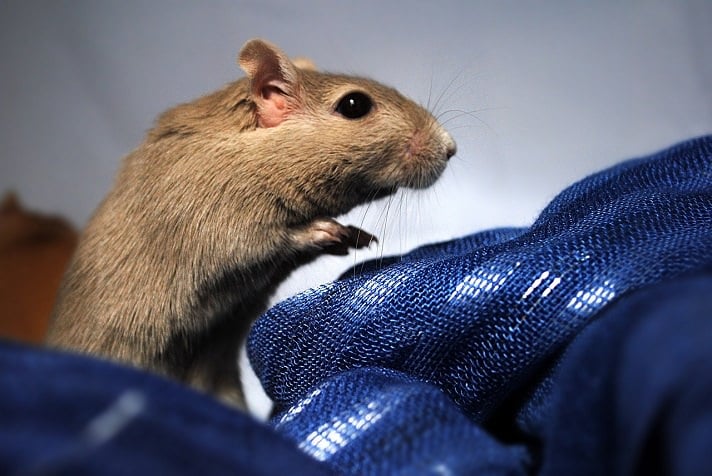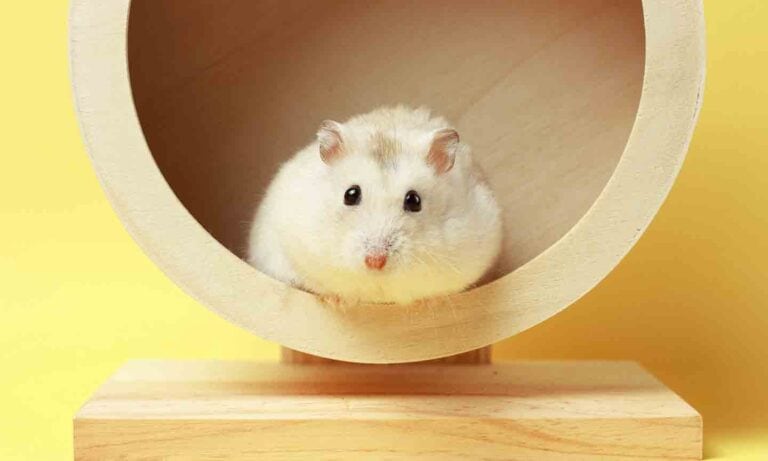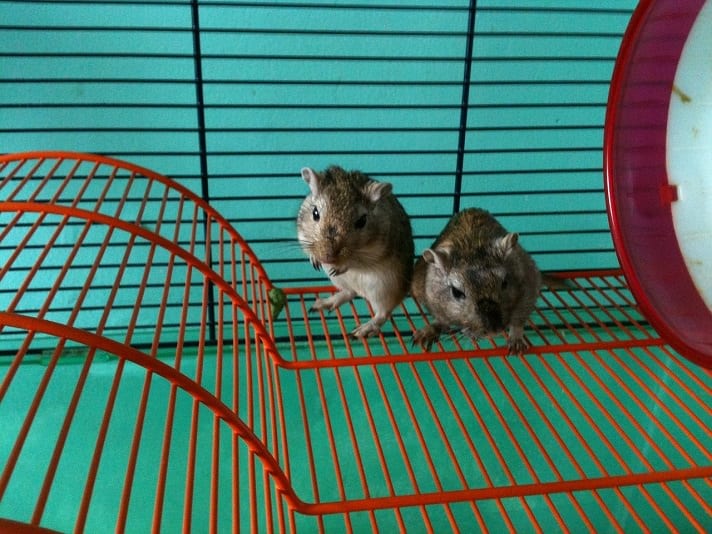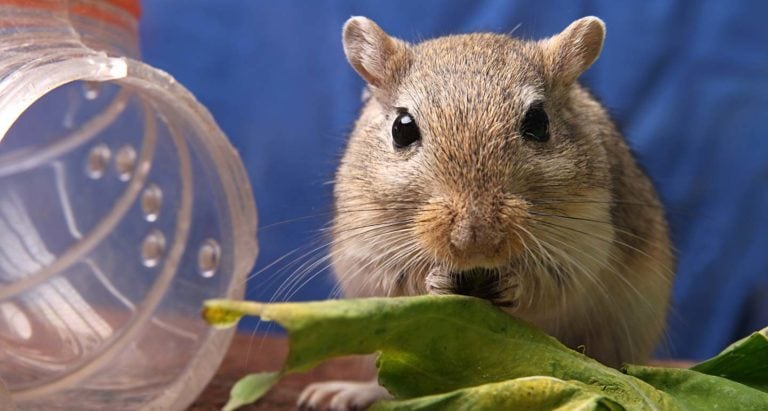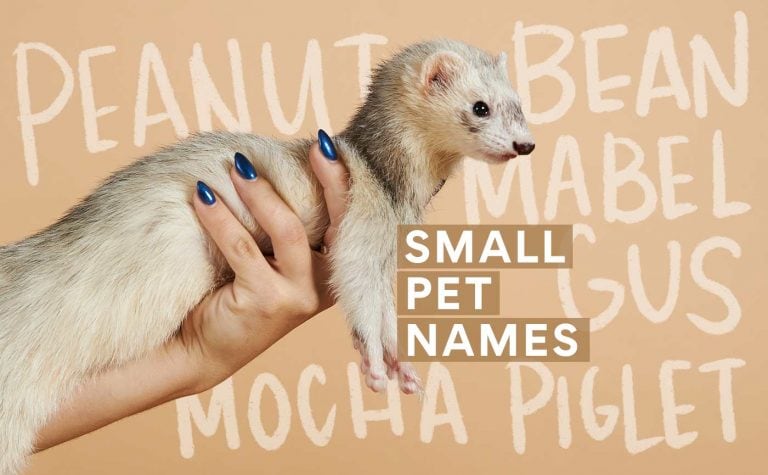Gerbils first came on to the pet scene in the 1960s, and they have been stealing hearts of small animal lovers ever since. What’s not to love about these little dynamos? Their size makes them easy to handle and their temperament tends to lean more toward friendly than aggressive. What’s more, gerbils are said to be a lot less odorous than other small animal companions of similar size. Here are some common behaviors that go with this smell-good, sociable, easy-to-handle pet.
1. Belly Marker
With gerbils, claiming territory starts with a belly rub. Gerbils have a scent gland on their belly and by rubbing their belly against an object or area they are essentially saying, “I got dibs!” to other gerbils.
2. Wink, Wink
If you pay attention to your gerbil long enough you might notice a wink. Make no mistake; it’s a wink and not just a blink. Many gerbil enthusiasts report that a content or submissive gerbil will wink at you or at one another. Go ahead and wink back, it’s a good way to say, “All’s good” to your little companion.
3. A Nosy Greeter
People shake hands to greet one another — gerbils rub noses! Gerbils will bestow this friendly gesture upon each other and some owners report that their gerbils will rub noses with them. Let’s just hope that your gerbil doesn’t take too much of a liking to your nose, or you might be given a belly rub (see number 1 above!).
4. Lil Thumper
Rabbits thump their hind legs when agitated or excited, and so do gerbils. They might have small feet, but they are said to make an audible sound when they smack their two back feet forcefully against the ground. Gerbil enthusiasts also note that, for gerbils kept in a group, once one gerbil thumps the others will follow suit. Some describe the thumping as a drumming sound and when a group starts thumping it can sound like a little drum circle.
5. Ready To Run
A gerbil that is unsure about a situation or preparing to react to a perceived threat might take a ready-to-run stance, which means keeping his tail in the air and an arched back — he’s getting ready to flee. You might see the ready-to-run stance after a bit of thumping.
6. A Little Chew, Chew
Gerbils, like other rodents, are dedicated chewers. This urge to gnaw on things helps keep their teeth at a healthy length. If not given the opportunity to chew on safe items, a gerbil’s teeth can become overgrown. A pet gerbil will appreciate a wooden block, toxin-free cardboard or other safe item to gnaw on.
7. A Live Squeaky Toy
Gerbils do raise their voices when bickering, and that is often done via high-pitched squeaking. They are said to have differing degrees of squeaking, including a more general squeaking as they go about their environment and/or while interacting with others of their kind.
8. Purring
Cats purr when content and so do gerbils. You might feel your gerbil’s purring vibrations when you hold him or her. Take this as a compliment — your gerbil friend is happy and relaxed around you.
9. Digging It
Gerbils are natural burrowers, and this instinct can also be found in pet gerbils. Don’t be surprised to see that your little critter has been spending a good part of his day creating tunnels in his bedding. And a gerbil won’t necessarily stop digging once he reaches a corner or wall of his enclosure. Some gerbil owners report that their pets keep on digging even if they aren’t going anywhere.
10. Taking A Stand
A curious gerbil is inclined to stand on his back feet with his front paws in the air. The gerbil is angling to get a better view or a better sniff of something that catches his interest.
11. Pair Behavior
Gerbils are social critters, and many enthusiasts recommend keeping a pair (preferably from the same litter), such as two females or a pair of males to prevent unwanted breeding. One behavior you might see with a gerbil pair is wrestling, which can be a playful behavior, especially if it is followed by mutual grooming. Chasing can also be playful, but be on the lookout for overexcitement that might be a prelude to a fight.
12. Licking Glass
A thirsty gerbil might lick the glass walls of his aquarium enclosure. This is especially true for young gerbils who aren’t quite accustomed to drinking from water bottles. Gerbil enthusiasts surmise that, in nature, gerbils lick up moisture and a pet gerbil that is licking glass is trying to do the same. Let licking serve as a good reminder to check your gerbil’s water bottle to make sure it’s full and/or not stopped up.
By Laura Doering
Featured Image: Via Etouale/Pixabay
Share:
